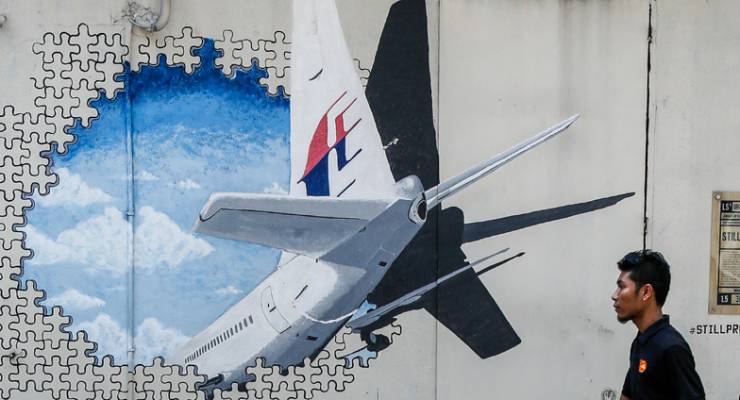
The world’s peak air safety authority, America’s Federal Aviation Administration (FAA), has ruled that the cabin oxygen system in some Boeing 777s, including the one that was in missing Malaysia Airlines flight MH370, must be changed to prevent the risk of a flash fire breaking out.
The airworthiness directive or AD, was published without fanfare last Thursday September 8 and takes effect this Thursday September 15. It is Docket No. FAA-2016-9047.
The news has broken the day after an apparently burned potential piece of wreckage from MH370 was handed to Australia’s air safety investigator, the Air Transport Safety Bureau (ATSB), by US lawyer Blaine Gibson, in Canberra.
Gibson has spent months seeking, and in some cases personally finding, suspected — and later verified — fragments from inside and outside the crashed 777, which have washed up on shores in Mozambique, Madagascar, Tanzania and South Africa. Other parts have been recovered from locations in Mauritius and La Reunion.
However, while the ATSB determines the wishes of Malaysia in relation to Gibson’s critically important discovery of a burn-marked panel, the US safety regulator, the FAA, has acted to prevent what it calls an “oxygen-fed fire in the passenger cabin”.
A long campaign by John Sampson, a former editor-in-chief at Air Safety Week, concerning the possibility of a short term oxygen fire flare triggering the ultimate destruction of MH370, appears to have been validated by the FAA’s actions, and in detail, in its supplementary information:
“This AD was prompted by a determination that the low-pressure oxygen flex hoses in the gaseous passenger oxygen system can potentially be conductive. Conductive oxygen hoses in the flight compartment were addressed previously in AD 2012-13-05, Amendment 39-17107 (77 FR 41045, July 12, 2012).
“The gaseous passenger oxygen system equipped with therapeutic oxygen is not continuously pressurized and must be activated by the flightcrew. Exposure to electrical faults, such as unintended short circuits, can result in localized electrical heating of the low-pressure oxygen flex hoses. This condition, if not corrected, could result in electrical current passing through the low-pressure oxygen flex hoses, which can cause flex hoses to melt or burn, and a consequent oxygen-fed fire in the passenger cabin.”
It’s important to cut through the clutter in the FAA’s terminology, which Sampson does at length in this technical and, in parts, polemical article. This is about a cabin oxygen supply system that could burn passengers to death in a short period of time, yet leave a jet capable of flying for hours.
Part of Sampson’s article concerns his disagreement with the PPRuNe pilot and pretend pilot forum, and accusations that Boeing has in this and in an earlier oxygen flare fire incident, sought to manage regulatory recognition of the seriousness of the risks to do the least harm to its interests. Readers should make their own minds up about those matters, but what matters above everything else is a now officially recognised threat to air safety.
Sampson has identified a potential risk to safety of flight in Boeing’s cabin oxygen supply systems, and whether or not it was the cause of the MH370 disaster, it was sufficiently grave a threat for the FAA to act.
*This article was originally published at Crikey blog Plane Talking








Crikey is committed to hosting lively discussions. Help us keep the conversation useful, interesting and welcoming. We aim to publish comments quickly in the interest of promoting robust conversation, but we’re a small team and we deploy filters to protect against legal risk. Occasionally your comment may be held up while we review, but we’re working as fast as we can to keep the conversation rolling.
The Crikey comment section is members-only content. Please subscribe to leave a comment.
The Crikey comment section is members-only content. Please login to leave a comment.